Guide to video production project management: strategies, key skills and best software
January 2025
11 mins
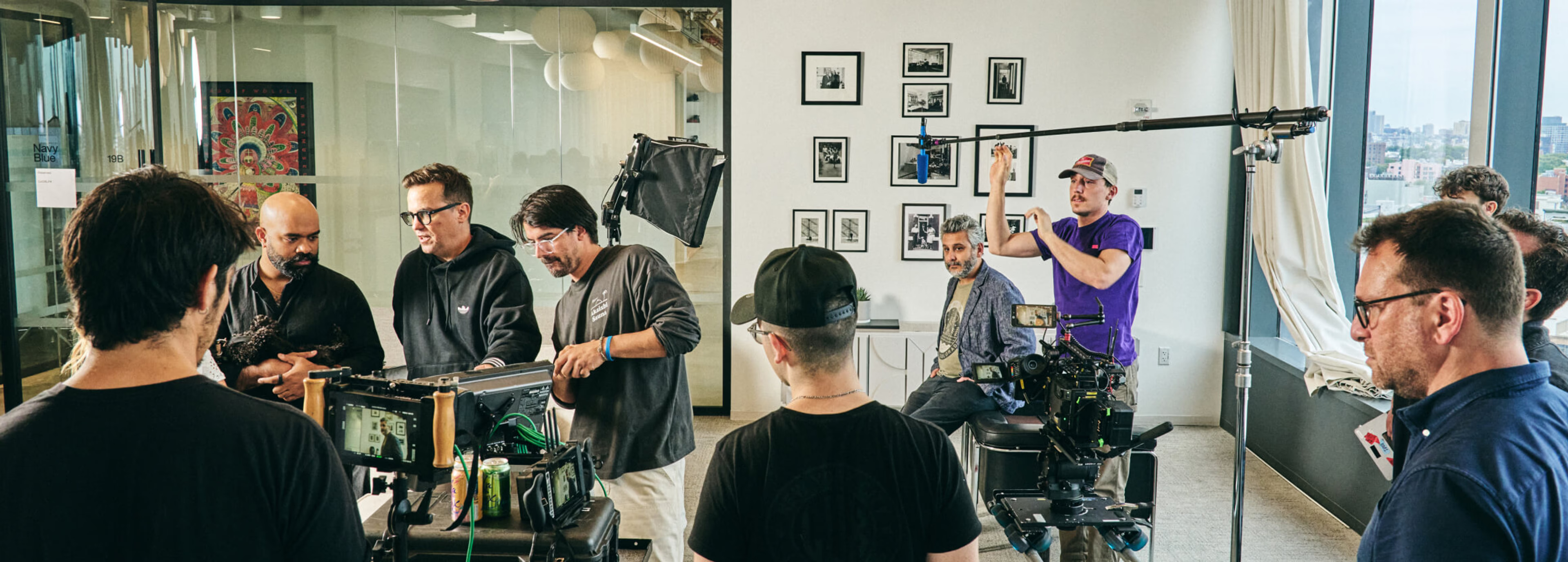
Table of contents
Just add LucidLink
No barriers to entry. Nothing new to learn. Known and familiar user interfaces that you choose for your team.
Start your free trialManaging a video production isn’t just challenging — it’s an art form in itself.
Beyond the usual balancing act of schedules, budgets and team coordination, video production brings unique twists: creative breakthroughs that derail original plans, artistic detours that redefine the vision and endless client revisions that stretch the budget to its limits.
So, how do you keep everything on track without losing your mind, or your passion for the project?
That’s exactly what we’ll explore in this article.
What is video production project management?
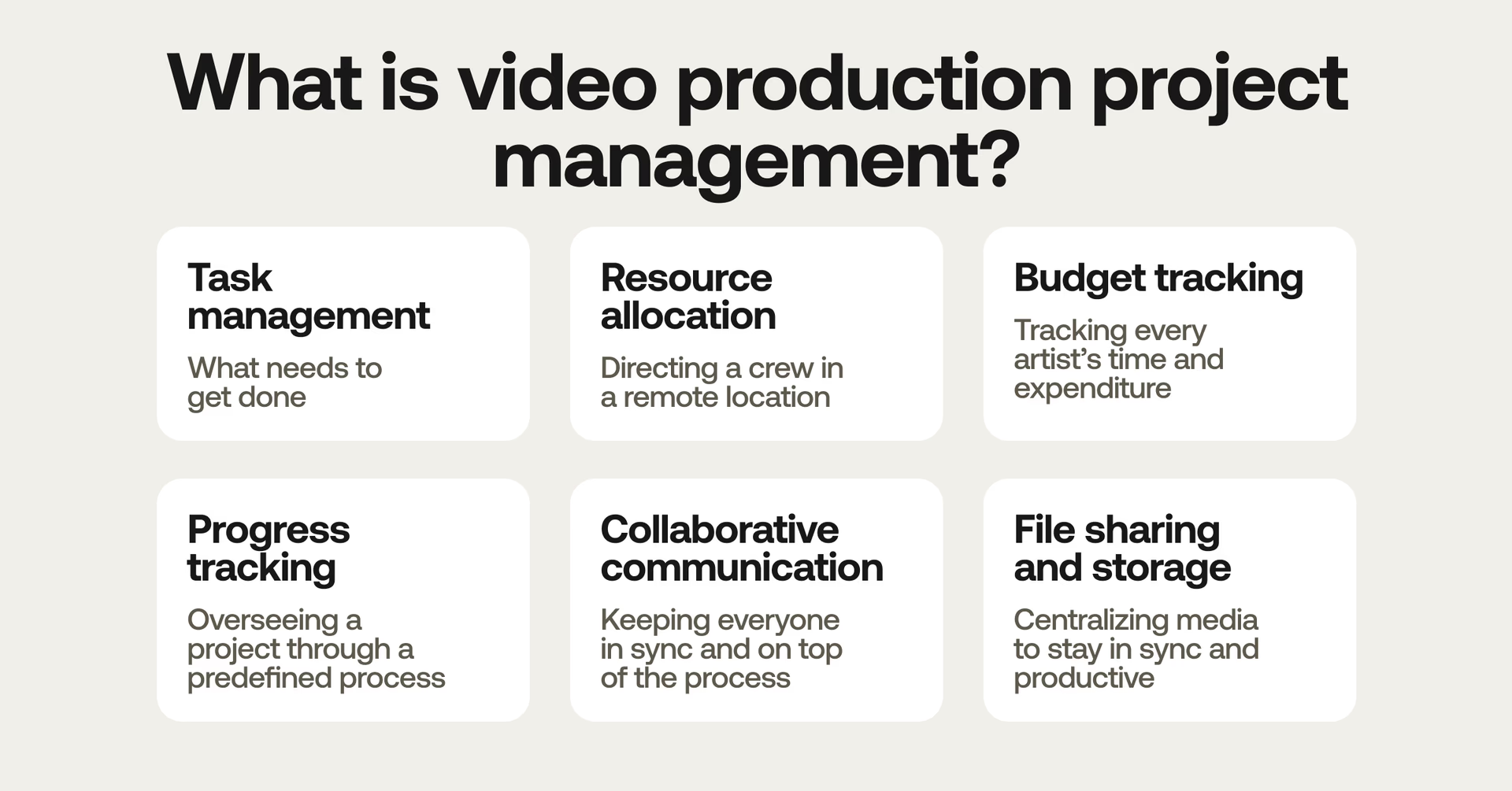
Video production project management is the art of managing a video project.
It’s about keeping video projects on schedule, on budget and on brief, while also making room for creative magic. Like bottling lightning on a daily basis.
Rather than walking you through the pre-production, production and post-production stages a video project goes through — you can read our video production workflow guide for that — in this article we’ll focus on the unique strategies and tactics for the effective management of a video production.
Things like:
Task management: what needs to get done
Resource allocation: who will do it and what do they need to do it
Budget tracking: tracking every artist’s time and expenditure
Progress tracking: overseeing a project through a predefined process
Collaborative communication: keeping everyone in sync and on top of the process
File sharing and storage: centralizing media to stay in sync and productive
Why does project management matter for video production?
Video productions can often be expensive, time-critical and creatively challenging. Without solid management, you risk flying blind and dealing with:
Ad-hoc chaos: no clear plan or oversight.
Missed opportunities: creative work failing to deliver profit due to inefficiencies.
In contrast, solid video production management helps to save time and money, avoid delays and avoid expensive collaborative conflicts by clearly laying out a roadmap for everyone to follow on the journey to success.
By putting proper communication systems and checkpoints on progress in place, an actively managed project can make everyone aware when problems arise and help plan an appropriate response.
How LucidLink supports better video project management
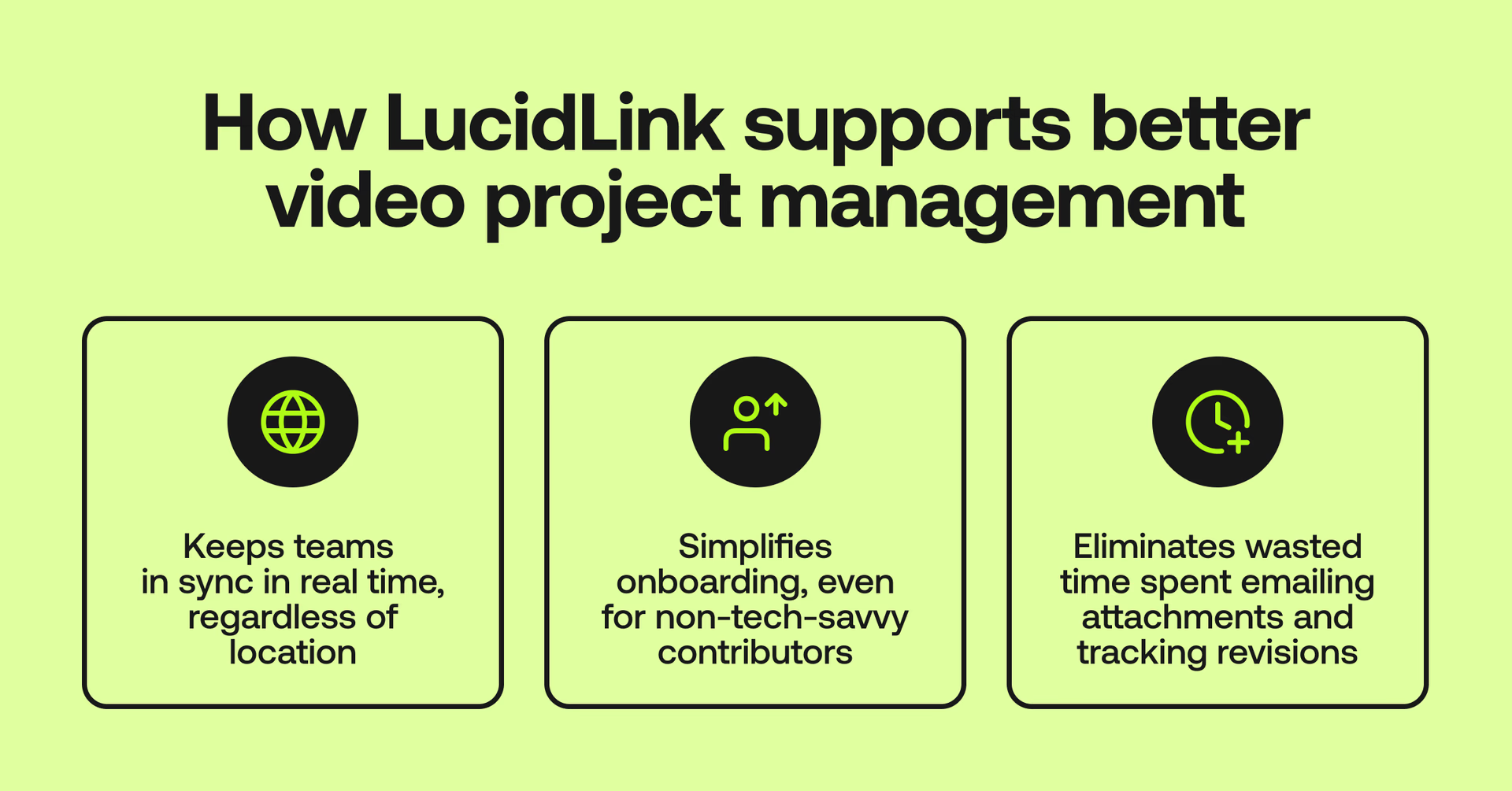
LucidLink offers a centralized, cloud-based media storage solution that:
Keeps teams in sync in real time, regardless of location
Simplifies onboarding, even for non-tech-savvy contributors
Eliminates wasted time spent emailing attachments and tracking revisions
Why send endless back-and-forth emails when your team can collaborate on original source files in real time with LucidLink?
Challenges of video production project management
Managing video production projects comes with unique hurdles due to their unique combination of complexity and creativity. Here are some of the common sticking points.
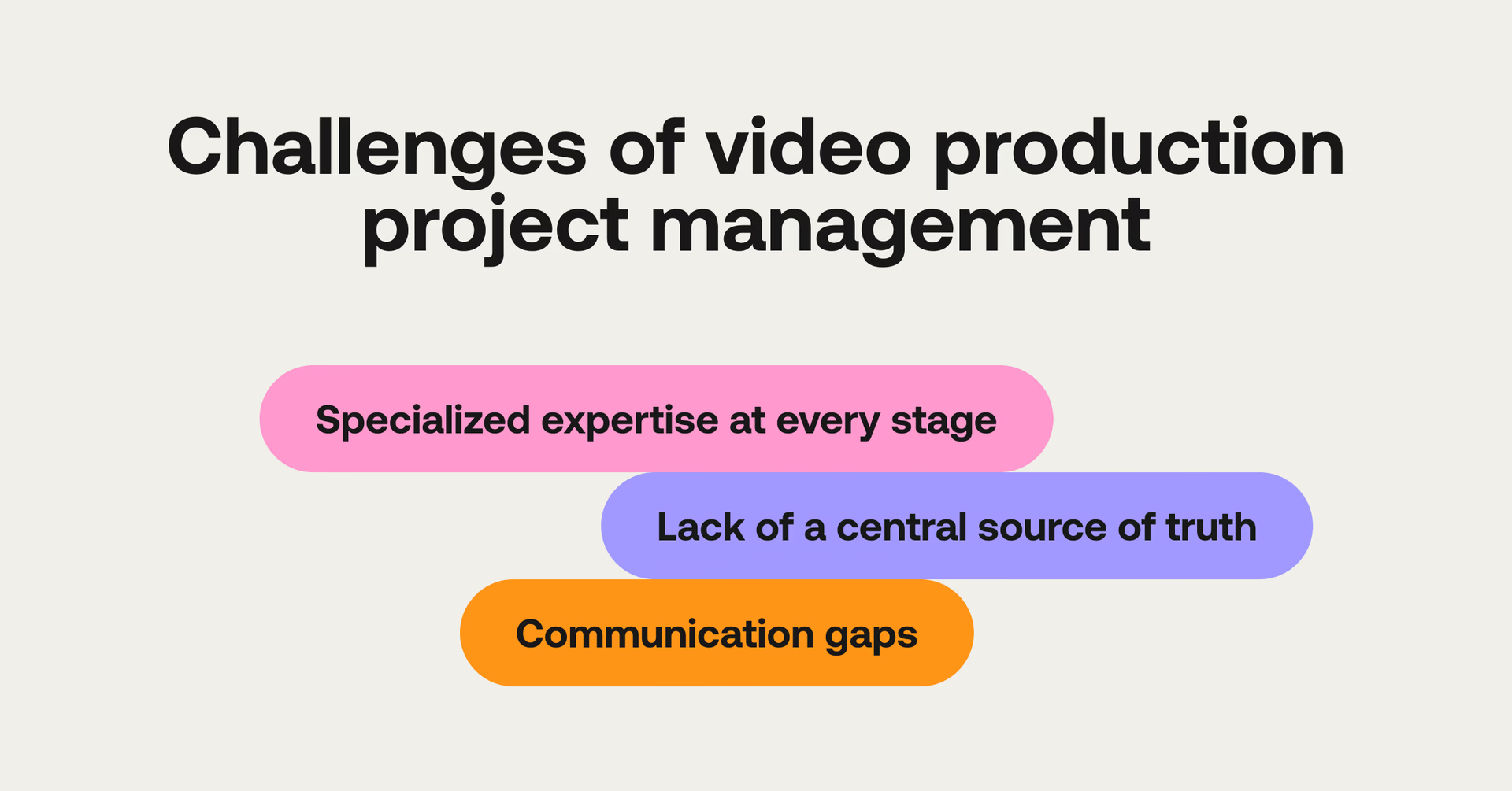
Specialized expertise at every stage
One of the biggest challenges in video production project management is coordinating the many layers of specialized expertise, each contributing at its own pace.
As a result, every stage of video production comes with its own distinct workflow and management needs.
Take production days, for example. You might be coordinating hundreds of cast and crew members, all working simultaneously, each with their own critical needs.
Post-production, on the other hand, might only involve one or two artists at a time. But schedules still need to stay flexible, as creative revisions can evolve right up until the final cut.
The tricky part is cramming free-wheeling creativity into a pre-ordained schedule.
Lack of a central source of truth
Most video productions lack a central dashboard that every contributor has access to for the duration of the project. A single source of truth where everyone can keep pace with the project’s progress and make updates.
Without this, the administrative burden falls on a handful of executives, producers and supervisors' shoulders. The result? Communication and productivity bottlenecks where a lack of clarity about what has been done and what needs to be tackled next slows everyone down.
Communication gaps
This lack of clear clarity also produces redundant effort.
For example, scheduling meetings to update everyone that specific tasks or project stages have been completed and their implications rather than directly updating a central dashboard.
Or in the review and approval process, which usually doesn’t happen with everyone making decisions collaboratively but rather one by one through a video review platform like Frame.io.
While this may be convenient for each individual, it makes it harder to align creative perspectives and opinions into a coherent decision everyone is happy with. This wastes time and effort.
3 best practices for effective project management for video production
So what are the industry-leading best practices for effective video production project management? Where can the workflow be streamlined thanks to new technologies and tools?
Here’s what we’ve learned works best:
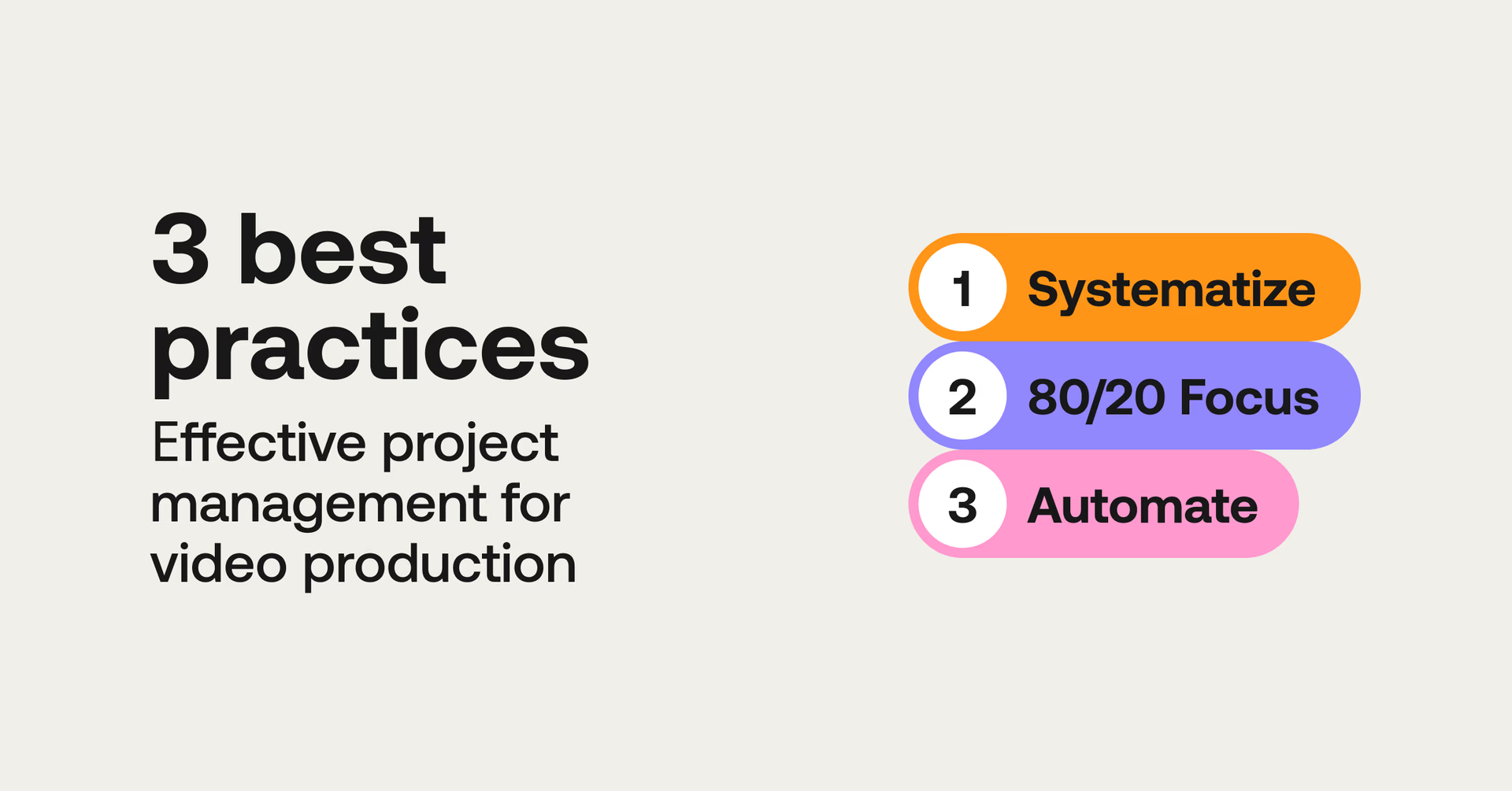
1. Systematize
Video project management isn’t rocket science but it does help to think about it rigorously.
A best practice for improving your project management is to create systems that funnel the amorphous nature of a creative project into an established process.
For example:
Taking client briefs with in-take forms of preset questions (online or in person)
Pre-filled budget template spreadsheets to account for common costs
Automated profit calculations based on current budgets and expenses
While every creative project is unique, there are enough commonalities to systematize the chaos using templates, checklists, and pre-built processes.
One ring to rule them all
Building a comprehensive project management system that can handle the nuances of each stage of production is much easier today.
Platforms like Notion or Monday.com can create custom dashboards and management systems, either from scratch or a template, with drag-and-drop simplicity.
Having one system that everyone uses keeps the whole team on the (literal) same page and removes the redundant effort of maintaining multiple systems that artists in different stages of the process prefer to use.
But can one system do it all? Not always. If you need multiple tools, set up automations or workflows that connect them for a smoother process.
For example, by pasting your video review links into the central dashboard everyone can watch the latest version, even if the place to view those links is on a dedicated external platform.
Stick with it
A systematic approach only works efficiently if everyone follows it.
Encourage clients and producers to put their feedback into the review and approval tool rather than in an email or WhatsApp reply.
Or, if there’s an upload portal for invoices, make it the only place to send expenses rejecting them over email.
Establishing a new system or process does take more initial effort, but once everyone gets in the groove, it will become second nature and so save everyone more time and effort in the long run.
2. 80/20 Focus
While it might be tempting to create a system and a process for every little thing, that can very quickly end in a bureaucratic nightmare.
The best strategy is to focus your efforts on the parts of the process that require the most manual management. This will deliver the quickest wins and biggest lifts.
For example, a management system that automatically alerts the next person in the workflow chain that a task has been completed, rather than sending them a Slack message.
Review and approval is another classic place where a simple system and using a bit of technology can create enormous efficiencies. Services like Frame.io allow reviewers to compare versions, make comments, draw on the screen and upload attachments to specific frames of the source video. This delivers a far better experience than endless email chains and rounds of revisions.
Problem > probe > improve
The best sources of improvements to any system are the bottlenecks and problem areas. These will give you a goldmine of incremental adjustments that will enhance every project moving forward.
This is why project post-mortems can be so valuable if you take the time to do them. Assessing what went well and what could be better next time.
Balancing burdens
A final best practice to consider is removing any overly burdensome aspects of your video production project management process. Does the return justify the effort?
For example, making everyone turn in hourly time-tracking reports, will give you a lot of fine-grain data on where time (and therefore money) is being spent on a project.
However, keeping track of time at this level, chasing everyone to fill in the paperwork and giving them yet another task might prove more work than it’s worth.
In that case, testing an automated system where possible might make this task easier. Although it’s obviously easier to track time in post-production where people are working on computers all day, rather than on set where everyone is running around in the real world.
Whatever route you choose, be mindful that it also comes with the ‘big brother’ effect of having someone look over your shoulder as you work.
3. Automate
Adding as much automation as possible to your video production workflow and project management tasks is also a major best practice.
Examples of useful video production automation would include:
Automated email lists per project to send call sheets to all the right contributors
Email notifications and reminders from project management software on upcoming deadlines
Watch folders with custom scripts
Client Portals for ingesting brand fonts, colors, logos etc.
An example of useful watch folder automation is to set up a specific folder to watch for new renders exported from your video editing program.
When a new file lands in that folder the script automatically uploads the file to the project folder on the video review service, collects the review link and emails this out to all of the preset recipients.
Choosing the right software for video production project management
Today there are dozens of creative project management tools that all claim to turn the drudgery of project oversight into a simple and joyful experience.
But not all platforms are built to handle the unique challenges of video production. So, which ones actually make a difference and what features are essential for video teams? Let’s break it down.
Main video project-specific requirements
Managing video production isn’t like managing other projects — every stage has different demands.
Pre-production: budgets, schedules, call sheets and storyboarding tools are essential to set the project up for success.
Production: coordination is key when managing hundreds of cast and crew members working simultaneously.
Post-production: tools for tracking media files, managing revisions and sharing edits for approval are critical.
You also need software that’s user-friendly and affordable for external collaborators — like freelancers or clients — who rotate in and out of projects.
5 best video production project management software options
Here are five platforms that stand out for video production teams.
Producer
Producer is a relatively new tool but one that was built for video production project management from the ground up.
It has many of the essential features for video production including: scheduling, storyboarding, shot listing, call sheet creation, asset management, review and approval, large file transfers and more.
Pros:
Specifically designed for film and video production
Includes features like review and approval file sharing
Cons:
Less customisable than other tools
No script breakdown and tagging features
StudioBinder
Claiming to be the leading video production project management software, StudioBinder has an impressive array of management tools and features designed specifically for video production.
What’s great about the platform is how many of the tools work together to save time and effort. For example, the script breakdown and tagging creates shot lists, prop lists, enhances call sheet data and much more.
It would be nice if they implemented an AI solution to automate the tagging of locations, props, cast etc. I’m sure they will in the future.
Pros:
Includes specialized tools like call sheets, shot lists, and storyboards
Automatic weather and hospital information for call sheets
Cons:
More expensive than other options
No post-production related features such as review and approval
ClickUp
ClickUp is a rapidly advancing project management platform that also includes collaborative features such as team chats, automations and fully customisable dashboards.
If you can think of it, you can probably build it with ClickUp. That said, all of that flexibility means that you will need to build a custom solution from scratch, which will take time.
There are, however, several premade ClickUp templates suitable for video production to help you get started, but these are limited to specific things like calendars and task management.
Pros:
Highly customizable and versatile with AI features being added
Offers a wide range of features, automations and external integrations
Cons:
Not specifically designed for video production
Steeper learning curve than Studiobinder or Producer
Notion
Similar to ClickUp, Notion is a highly flexible and customisable platform for building just about anything. With 20,000+ templates to choose from, largely created by Notion’s community of users it is a thriving ecosystem.
Notion has also been rolling out it’s own AI implementation throughout it’s feature set over the past year or so.
There are over 100 ‘video production’ templates to choose from to get you started. Some of these are free and others are paid purchases from the original creator.
Pros:
Flexible and customizable for various project types
Strong community of users to learn and benefit from
Cons:
Less structured than dedicated project management tools
Will require more time to set up and organize for video production projects
Monday.com
Compared to the other options in this list Monday.com feels the least useful for video production project management, despite having a pre-built template for this task.
It lacks any of the industry specific features such as the ability to breakdown scripts, create moodboards or shots lists, build call sheets or host video files for review and approval.
That said, it does include customizable forms for taking client briefs, task management assignment and client CRM features.
Pros:
Visual and intuitive interface
Customizable workflows and automation
Cons:
Expensive for what the feature set
Lacks video production-specific features
Streamline collaboration with LucidLink
While LucidLink isn’t a traditional project management tool, it solves one of video production’s biggest headaches: file access and collaboration.
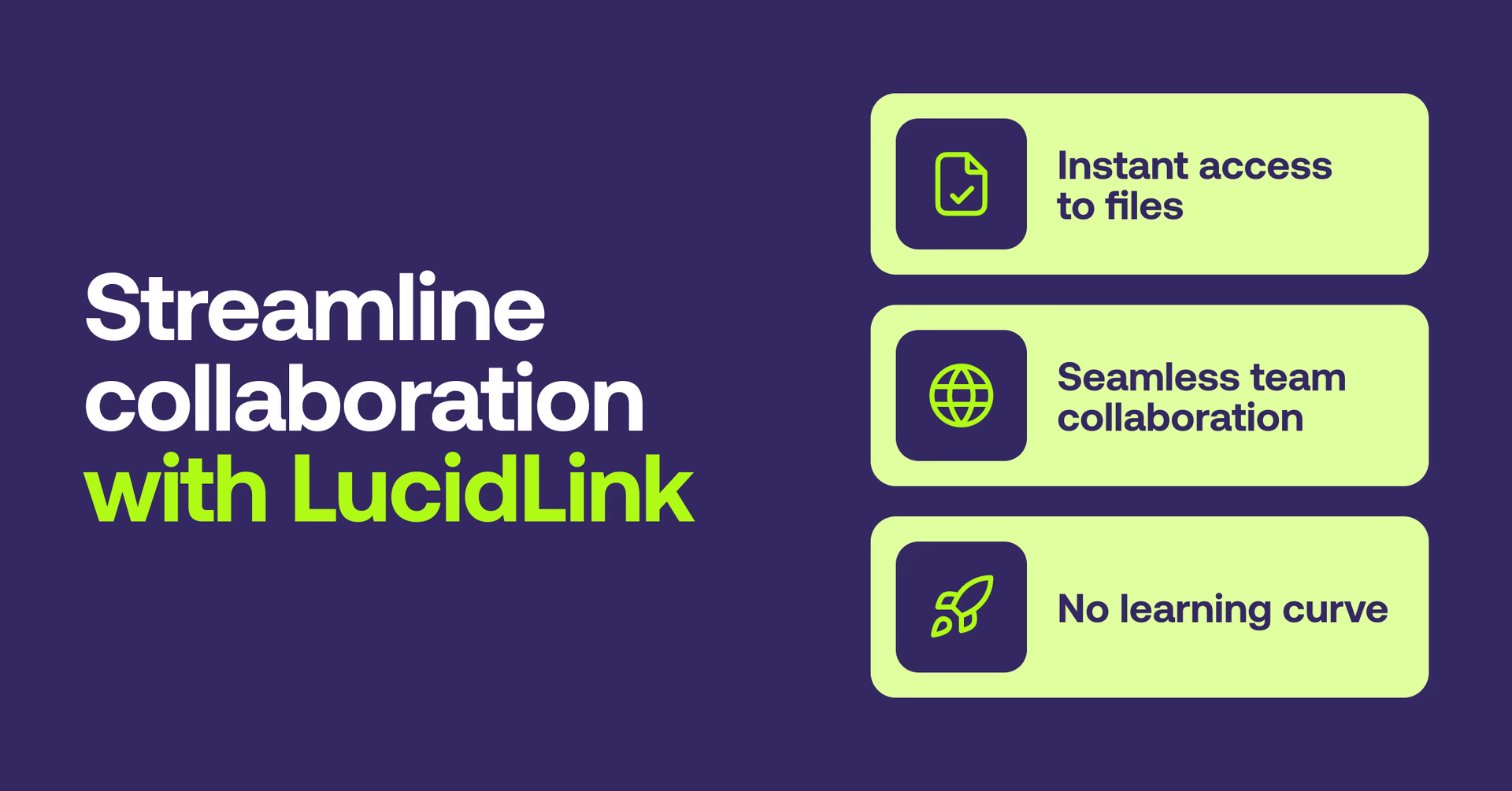
LucidLink acts as the central hub for your creative assets:
Instant access to files: work on video files in real-time without downloads or syncing.
Seamless team collaboration: whether you’re on set, in post-production or working remotely, LucidLink keeps everyone in sync.
No learning curve: LucidLink works just like a local drive, so your team can jump right in.
By combining LucidLink with the right project management software, you can keep your workflows smooth, your files organized and your team focused on what matters most: creating incredible work.
Ready to simplify your video production workflows? Start a free trial of LucidLink today.
Keep reading

How the cloud fuels storytelling: 5 takeaways from top creatives
Hear how top creatives use the cloud to collaborate in real time, streamline workflows and stay ahead.
24 April 2025, 4 mins read

Marketing video production guide: how to stand out & get results in 2025
Discover expert strategies for marketing video production. Learn how to create standout videos that engage your audience and drive real ROI.
28 February 2025, 8 mins read
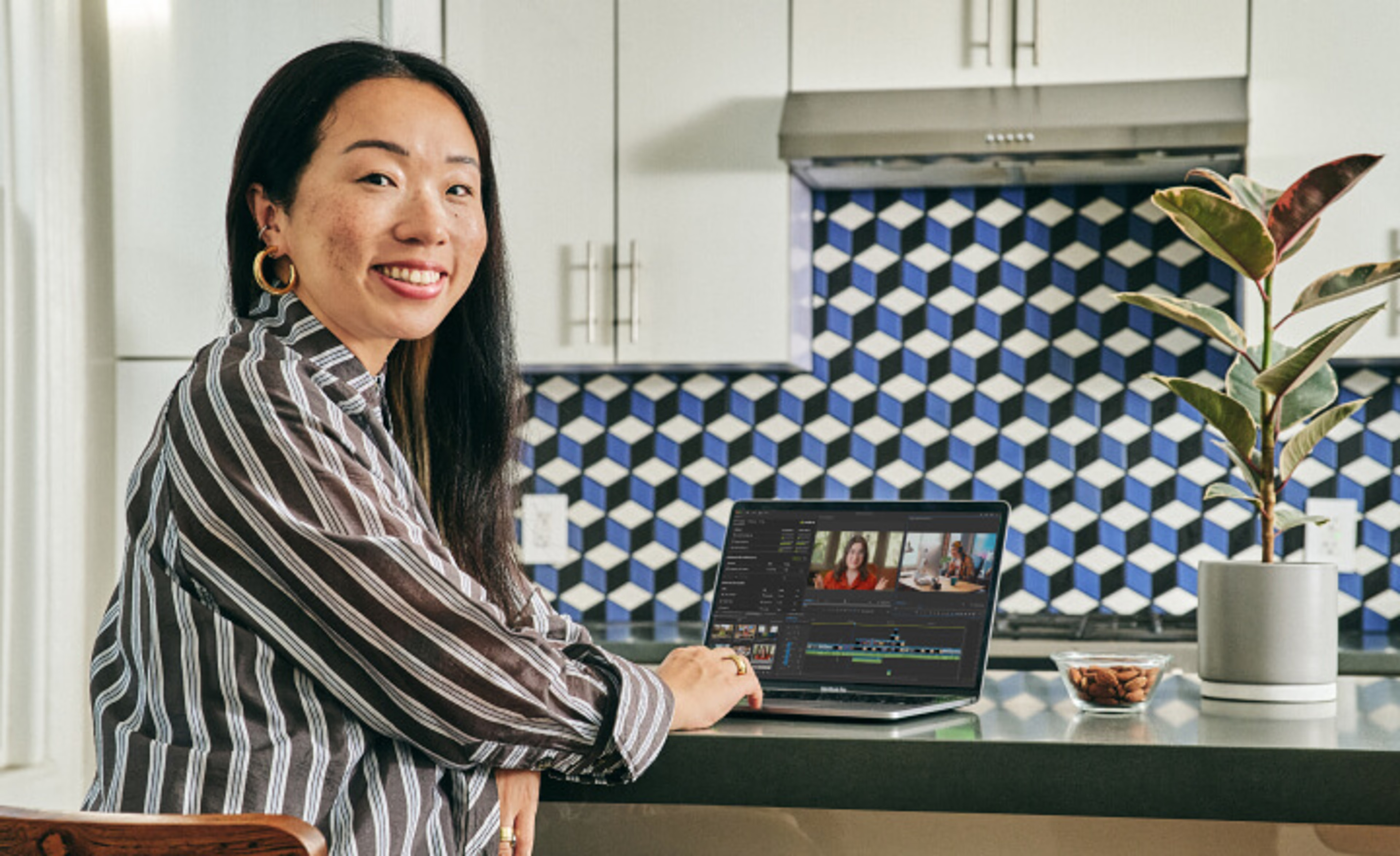
Remote video production: a step-by-step guide
Discover the challenges, steps and tools needed for remote video production. Get advice to create remarkable remote productions in our comprehensive guide.
14 February 2025, 10 mins read
Join our newsletter
Get all our latest news and creative tips
Want the details? Read our Privacy Policy. Not loving our emails?
Unsubscribe anytime or drop us a note at support@lucidlink.com.